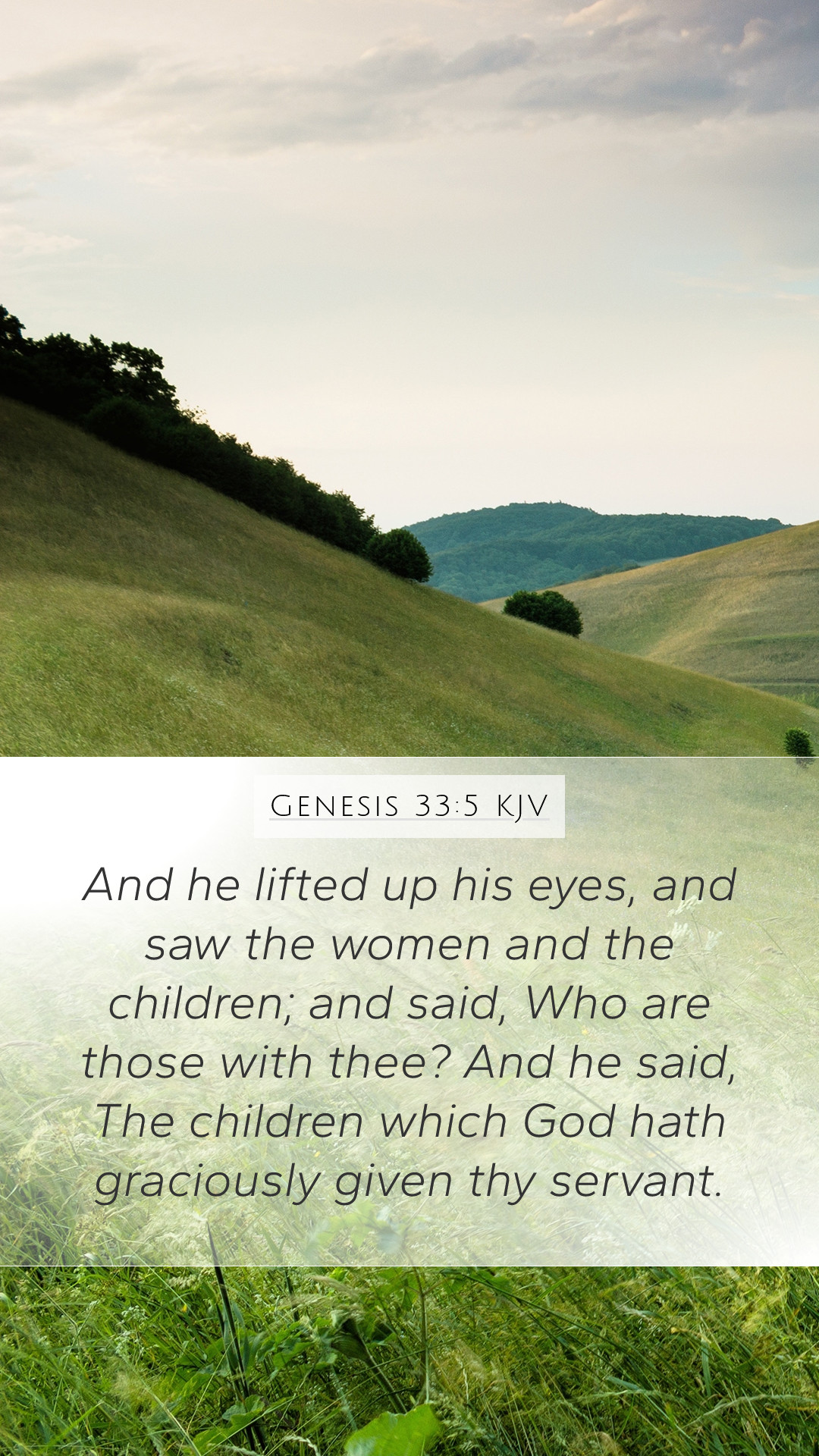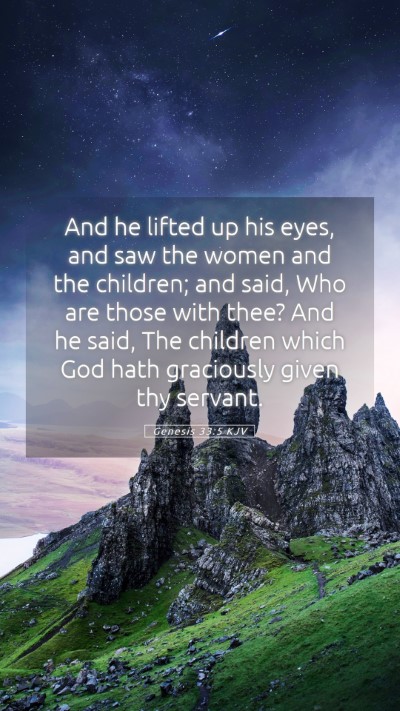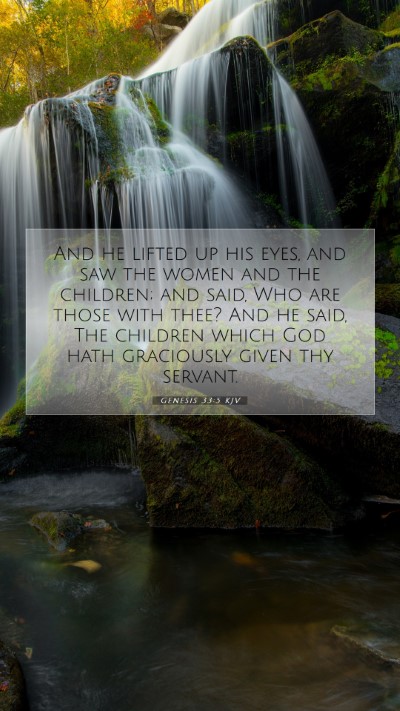Understanding Genesis 33:5
Bible Verse: Genesis 33:5
"And when Esau lifted up his eyes, and saw the women and the children, he said, Who are those with thee? And he said, The children which God hath graciously given thy servant."
Bible Verse Commentary
This verse occurs during a pivotal moment in the narrative of Jacob and Esau, highlighting themes of reconciliation and divine providence. The encounter between the two brothers had been years in the making, marked by tension and a history of conflict.
Contextual Analysis
- Historical Context: Jacob and Esau are twin brothers, with Jacob having previously deceived Esau out of his birthright and blessing. Their reunion occurs after years of separation, during which Jacob feared for his life due to his past actions.
- Character Examination: Esau's reaction upon seeing Jacob's family reflects a significant transformation in his character. From a vengeful brother, he transitions to one who displays compassion and curiosity about Jacob's children.
Bible Study Insights
This encounter encapsulates the broader narrative of reconciliation throughout Scripture. The way Esau greets Jacob and his family can be seen as a symbol of God's grace and the transformative power of forgiveness.
Meaning of Bible Verses
Genesis 33:5 illustrates several important themes:
- The Grace of God: Jacob acknowledges God's blessings by attributing his family to God's graciousness, emphasizing the idea that all blessings are ultimately gifts from God.
- Reconciliation: The restoration of the relationship between Jacob and Esau serves as a powerful reminder of the possibility of redemption and upward movement after conflict.
- Family and Legacy: Jacob's mention of his children reinforces the significance of family ties and the continuation of one’s heritage, built through God’s covenantal promises.
Scripture Analysis and Exegesis
Delving deeper into the text allows for a richer understanding of its implications:
- Use of “God hath graciously given”: This phrase highlights Jacob's gratitude and recognition of divine favor. It encourages readers to contemplate the importance of acknowledging God’s role in our lives.
- Emotional Tone: The emotional undertones in this reunion reflect themes of warmth, love, and acceptance, countering the initial feelings of dread that Jacob had about facing Esau.
Application of Bible Verses to Daily Life
This passage prompts reflection on several important life applications:
- Forgiveness and Reconciliation: Readers are encouraged to seek out reconciliation in their own relationships, demonstrating the power of forgiveness that can lead to restoration.
- Gratitude for Family: This verse can inspire gratitude for the family and loved ones in our lives. It urges believers to recognize the blessings that come from God, including relationships.
- Living in Harmony: Like Jacob and Esau, we too face conflicts that can be mended through humility. Finding ways to approach past grievances can lead to healing and unity.
Related Bible Cross References
- Hebrews 12:14 - "Follow peace with all men, and holiness, without which no man shall see the Lord."
- James 3:18 - "And the fruit of righteousness is sown in peace of them that make peace."
- Matthew 5:9 - "Blessed are the peacemakers: for they shall be called the children of God."
Conclusion
In summary, Genesis 33:5 serves as a poignant reminder of the importance of reconciliation, the grace of God, and the blessings of family. This verse is not only a historical record but also a living word that continues to inspire individuals seeking to understand Scripture and apply its teachings in their lives. The blessings and complexities of human relationships are ultimately underpinned by divine providence, as illustrated in the lives of Jacob and Esau.


